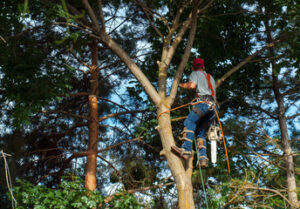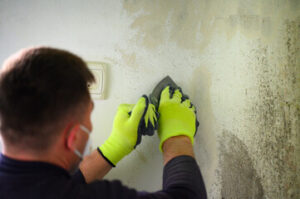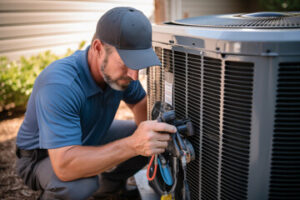Trees add beauty to your landscape and increase your home’s value. But they need to be regularly checked for safety and health.

A reputable tree service provides a wide range of services including pruning, tree removal and insect/disease inspections and treatments. When hiring a tree service, look for accreditation from a professional organization. Get in touch with Lee Tree Service for professional support.
When you need the services of a Tree Service, it’s important to take your time and find a company with a good reputation. Ask friends, family, and neighbors for recommendations, and do some online research. You can also check with your local government to see if there are any licensing or insurance requirements. Finally, check with the BBB to see if the company is accredited.
It’s also a good idea to get multiple estimates from different companies. This will help you compare the prices, services, professionalism, and knowledge of each company. You should also ask the company what type of work they plan to do. For example, some tree services may plan to fell a large tree, while others might prefer to remove it in small sections. Both methods have their pros and cons, so make sure to discuss these with your prospective tree service before hiring them.
When selecting a tree service, ask about their insurance policies. A reputable company will have general liability and workers’ compensation insurance. This will protect you if someone is injured while working on your property. Additionally, a reputable company will follow industry standards. They will not use techniques such as “tree topping,” “lion’s tailing,” or climbing spikes, which can injure or kill your trees.
A reputable New York Tree Service offers a wide variety of services, including stump grinding, trimming, and pruning. They can even handle emergency tree removals during storms. In addition, they provide a complete lineup of landscaping services, such as mowing and mulching. In some cases, they may work in conjunction with landscape contractors or architects to create a cohesive design. They can even decorate your yard for the holidays.
Experience
If you’re looking for a tree service, look for one that has plenty of experience and is licensed and insured. This will ensure that the work is done correctly and that you’re not held liable in the event of an accident or property damage. In addition, a good company should have a solid reputation.
Another tip is to always get several quotes from different companies before hiring one. This will help you avoid scams and find the best deal. You can also ask what the company plans to do with the wood or chips once the trees are removed. Some companies will sell them, while others will use them for mulch or firewood.
Before choosing a tree service, you should always make sure that the company has proper insurances and is certified by an arborist. This is especially important if you’re working with large trees, as they can pose serious risks. You should also check whether the company is accredited by the Better Business Bureau.
A good tree service should have years of experience and be able to handle all kinds of trees, from palms to deciduous ones. They should be able to diagnose problems and recommend the best course of action. They should also have the equipment to safely remove the tree and clean up the debris.
In addition, a tree service should have a strong business plan and a website that is easy to navigate. This will help them attract customers and establish themselves as a trusted resource. They should also offer competitive prices.
Lastly, a good tree service should have excellent customer service. They should be willing to answer questions and respond quickly to emails and phone calls. They should also be able to work around the schedule of their clients.
If you’re considering starting a tree service, it’s important to take your time when choosing a name for your business. This will be used on the side of your trucks, social media pages, uniforms, and documents (such as quotes and invoices). It’s also a good idea to choose a name that is memorable and reflects what your business does.
Insurance
If a tree service doesn’t have the right insurance, they could be sued for damages caused by their work. They should have general liability, worker’s compensation and professional liability insurance. If they don’t, it may be in your best interest to hire someone else. This type of insurance is a necessity for any business that performs labor or services at people’s homes. Workers’ compensation covers any injuries suffered by employees while on the job, while professional liability insurance protects a tree service from allegations of negligence or mistakes in their work.
Scaling tall trees with buzzing chainsaws isn’t a safe or convenient occupation, and even one mistake can have major consequences. Accidents happen, and a single lawsuit could erase all the sweat equity and investment that goes into running this kind of business. That’s why it’s essential for tree services to have comprehensive insurance coverage.
General liability insurance for tree services covers a range of potential liabilities, including bodily injury and property damage. It can also protect your business from legal action brought by third parties, such as if a homeowner claims that your work left their property more vulnerable to high winds. In addition, the policy will cover the cost of legal fees and settlements.
Workers’ compensation insurance will pay for any employee who is injured while performing work at a client’s home. This is a legal requirement in most states, and it’s important to ask any tree service you hire about their worker’s comp policies. You should also make sure they have general and auto liability insurance, which will cover any damage or injuries that their vehicles cause while driving to and from job sites.
Errors and Omissions (E&O) insurance is another crucial type of coverage for tree services. This type of insurance is typically recommended by insurance agents for businesses that provide professional advice or services, like tree service companies. E&O insurance protects your tree service against allegations of malpractice, such as failing to diagnose or treat a diseased tree properly or making costly mistakes during pruning or removal.
Equipment
Trees are vital to the health and beauty of a property. They provide shade, boost curb appeal, and prevent erosion. They also help prevent diseases in humans and animals. However, maintaining the trees on a property can be challenging, especially in large cities like New York City. A professional tree service company can help you maintain healthy trees and make sure your landscape is safe for your family.
When choosing a tree service, look for one that has the right equipment to do its job. A good company will have a variety of tools and equipment, such as tree pruning, stump grinding, and emergency storm damage services. The company will also have a crew of arborists with the right training and experience to handle each task.
Climbing and rigging equipment is essential for tree service professionals. These tools allow them to climb large trees and cut at the proper height. Using the right equipment can help reduce the risk of injury and improve productivity. A tree service should have climbing equipment such as a portable ladder, tree rigging ropes, arborist blocks and pulleys, lowering devices, snap hooks, and a wood chipper. It should also have a chainsaw with a quality gas engine. Using an electric chainsaw can be hazardous, so a gas-powered cutting tool is the safer choice.
A good tree service will also have a wood chipper, which turns branches and limbs into small chips that can be used for mulch. It should also have a crane, which allows it to remove larger trees and limbs from hard-to-reach areas. The crane should be able to reach up to 60 feet.
Many tree services offer tree planting services to help homeowners and businesses plant new trees on their properties. They can also provide advice on which types of trees to plant and how to care for them. These services can help you improve the aesthetics of your landscape and increase the value of your property.
The tree service industry is a dangerous one, and there are plenty of risks for bodily harm and property damage. It’s important to work with a reliable tree service company that has the appropriate insurance coverage and is licensed and insured. You can find a trusted company by getting referrals from friends and neighbors or researching online reviews. You can also check the company’s website for information about their services, experience, and credentials.








